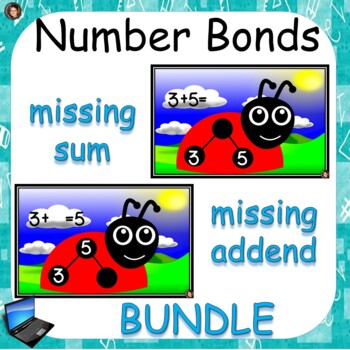Number Bonds BUNDLE
- Google Slides™

Products in this Bundle (2)
Description
Practice Number Bonds, Addition, and Subtraction with this cute ladybug
You will get 94 pages -- counting up to 10
You will get 151 pages -- counting up to 20 (sum ranges from 10-20)
Together you get a whopping 425 slides!
Assign just couple slides a day -- MIX & MATCH for UNLIMITED combinations of slides for DAILY practice to improve speed, fluency, and accuracy in math.
All problems have either:
missing sum OR missing addend
Students will enjoy these part/part/whole pictorial representation of problems.
They will practice composing and decomposing numbers.
Feel free to assign it in Google Classroom, Seesaw, or any other digital platform you are working with :)
Made with love
Lucy Kosinski
©The Easyway
You might like these activities:
Letter Recognition ANIMAL THEMED free
Read me & Draw me - Silly Sentences great for comprehension and creativity (FREE)





